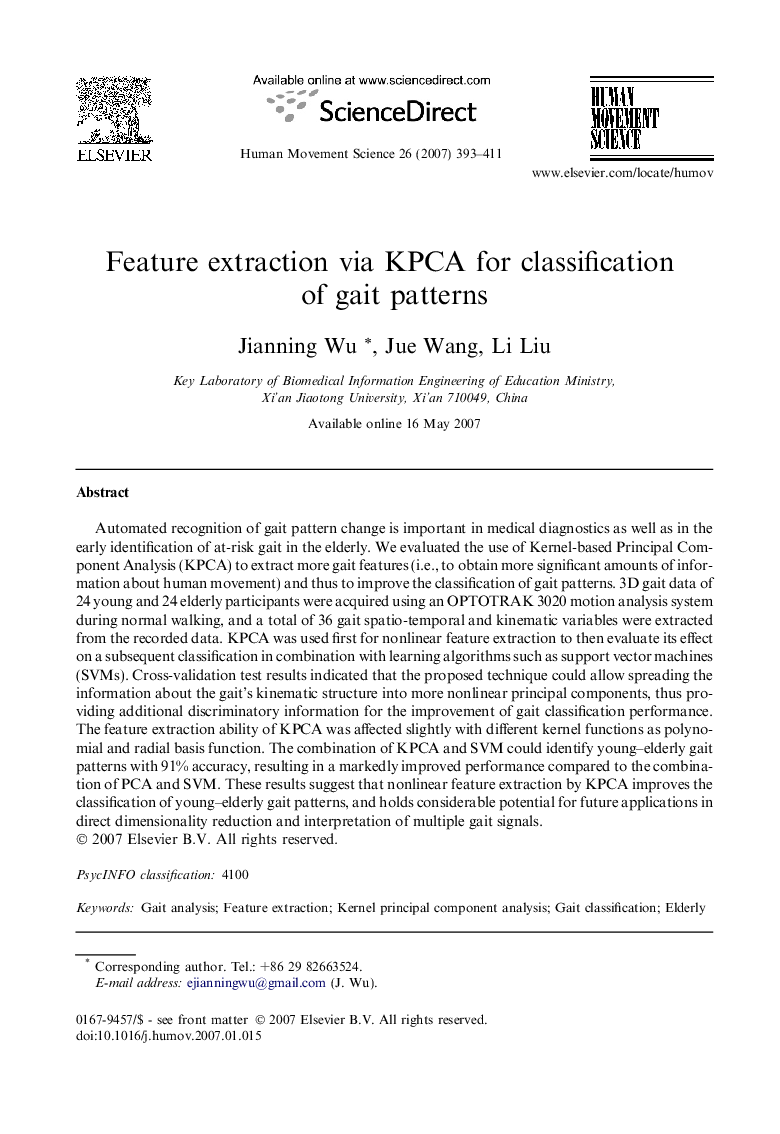| Article ID | Journal | Published Year | Pages | File Type |
|---|---|---|---|---|
| 928854 | Human Movement Science | 2007 | 19 Pages |
Automated recognition of gait pattern change is important in medical diagnostics as well as in the early identification of at-risk gait in the elderly. We evaluated the use of Kernel-based Principal Component Analysis (KPCA) to extract more gait features (i.e., to obtain more significant amounts of information about human movement) and thus to improve the classification of gait patterns. 3D gait data of 24 young and 24 elderly participants were acquired using an OPTOTRAK 3020 motion analysis system during normal walking, and a total of 36 gait spatio-temporal and kinematic variables were extracted from the recorded data. KPCA was used first for nonlinear feature extraction to then evaluate its effect on a subsequent classification in combination with learning algorithms such as support vector machines (SVMs). Cross-validation test results indicated that the proposed technique could allow spreading the information about the gait’s kinematic structure into more nonlinear principal components, thus providing additional discriminatory information for the improvement of gait classification performance. The feature extraction ability of KPCA was affected slightly with different kernel functions as polynomial and radial basis function. The combination of KPCA and SVM could identify young–elderly gait patterns with 91% accuracy, resulting in a markedly improved performance compared to the combination of PCA and SVM. These results suggest that nonlinear feature extraction by KPCA improves the classification of young–elderly gait patterns, and holds considerable potential for future applications in direct dimensionality reduction and interpretation of multiple gait signals.
